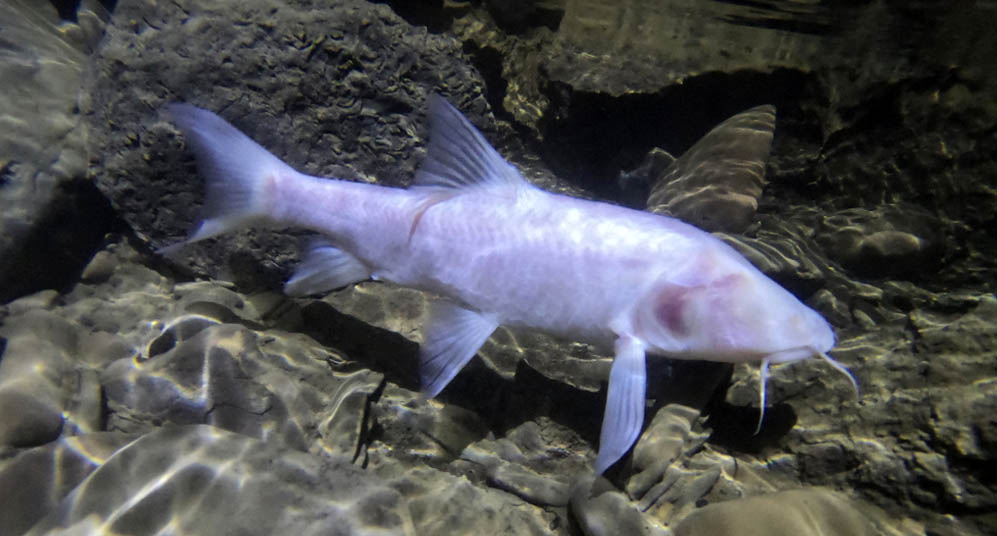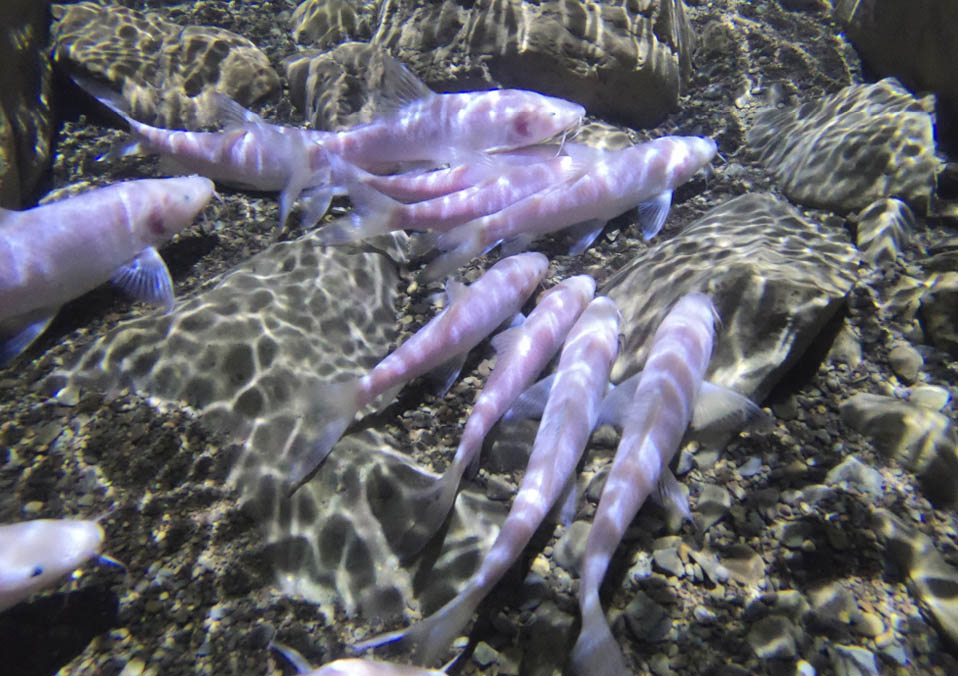
A recent open-access article introduces the world to a new and extremely large species of cavefish from Northeast India, and it’s a member of the cyprinid family, Cyprinidae. Researchers Neelesh Dahanukar, Remya L. Sundar, Duwaki Rangad, Graham Proudlove, and Rajeev Raghavan have published their findings in the article “The world’s largest cave fish from Meghalaya, Northeast India, is a new species, Neolissochilus pnar (Cyprinidae, Torinae)” in the journal Vertebrate Zoology.
From the abstract: “The world’s largest subterranean fish was discovered in 2019, and was tentatively identified as a troglomorphic form of the golden mahseer, Tor putitora. Detailed analyses of its morphometric and meristic data, and results from molecular analyses now reveal that it is a new species of the genus Neolissochilus, the sister taxon of Tor. We formally describe the new species as Neolissochilus pnar, honouring the tribal communities of East Jaintia hills in Meghalaya, Northeast India, from where it was discovered.” The researchers note that specimens larger than 400 mm (15.75 inches) have been encountered, edging out the 385 mm Australian Blind Cave Eel, Ophisternon candidum, for the title of largest cavefish in the world.

Of course, we’re not going to give away all the secrets and surprises here! For more exciting photos and a much more detailed accounting of this new species, read the species description for FREE on the Vertebrate Zoology website!
Reference
Dahanukar N, Sundar RL, Rangad D, Proudlove G, Raghavan R (2023) The world’s largest cave fish from Meghalaya, Northeast India, is a new species, Neolissochilus pnar (Cyprinidae, Torinae). Vertebrate Zoology 73: 141-152. https://doi.org/10.3897/vz.73.e101011
Available freely online at https://vertebrate-zoology.arphahub.com/article/101011/list/1/





